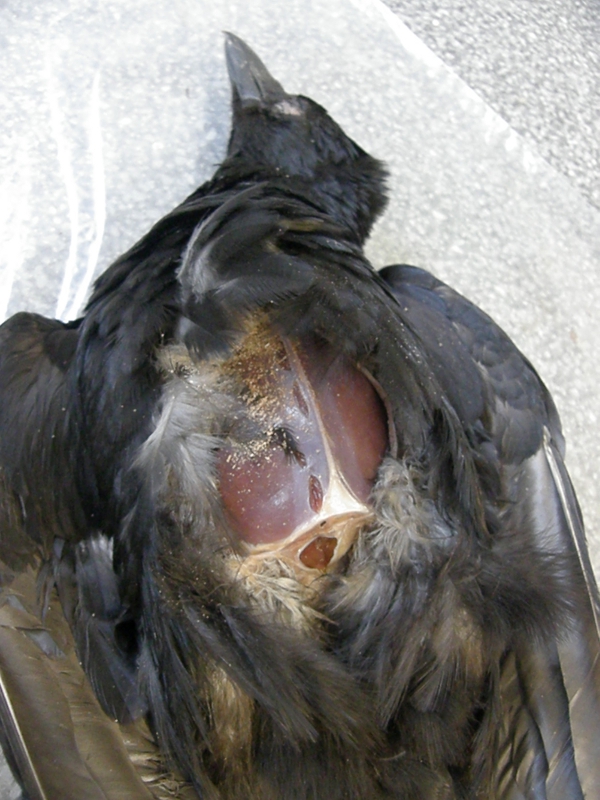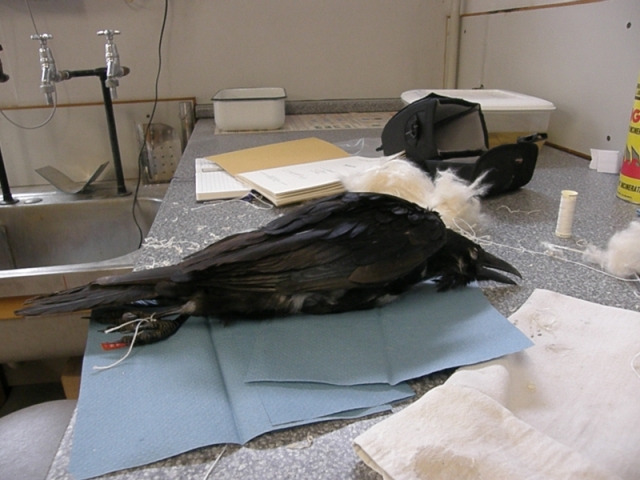This past week I was in the Natural History Museum, Tring working on various aspects of their amazing bird collections. The curatorial staff there kindly agreed to train me on areas I wanted to expand on, and I am very grateful for their time.
On the first day I worked with bird curator Hein Van Grouw, who is responsible for preparing bird skins and taxidermy. Hein taught me how to prepare a crow skin. His method of skinning was different from Henry’s and it was very useful to see what my options were when preparing a skin. Hein was a brilliant teacher, and always kept the process interesting. The following are some photos of skin preparation. Please be warned there are images of dead birds. This is also not a “step by step” of how to skin a crow- I have left out many steps, mostly because I did not take photos of the entire process.
The crows we were working with were mostly juveniles in moult. Hein showed me how to note the age of the bird by the colour and stage of growth in the feathers. Juvenile feathers in carrion crows are often brown, while the adult feathers are the jet black we often associate with crows.
After the skin is removed from the body, it is washed in the sink using water and washing up liquid. It then is placed in an alcohol bath so it will dry out quicker. This also tightens the skin and helps give the bird shape. However, this means you have to work fast while stuffing the bird as the skin isn’t as flexible.
First, the leg bones are fleshed out using kapok, then the stumps of the wing bones tied together. The head and eye sockets are also stuffed with kapok.
A “body”, which was made earlier is then inserted into the chest cavity. The legs are secured to the body.
The bird is then sewn up. Because the feathers and skin are usually a little damp, the bird needs drying. Here is Hein blow-drying a specimen:
Here is a short video of me finishing my second crow. I look so serious when I’m concentrating!











Fascinating! Thank you again for the insight into your work.
Thanks for reading! 🙂